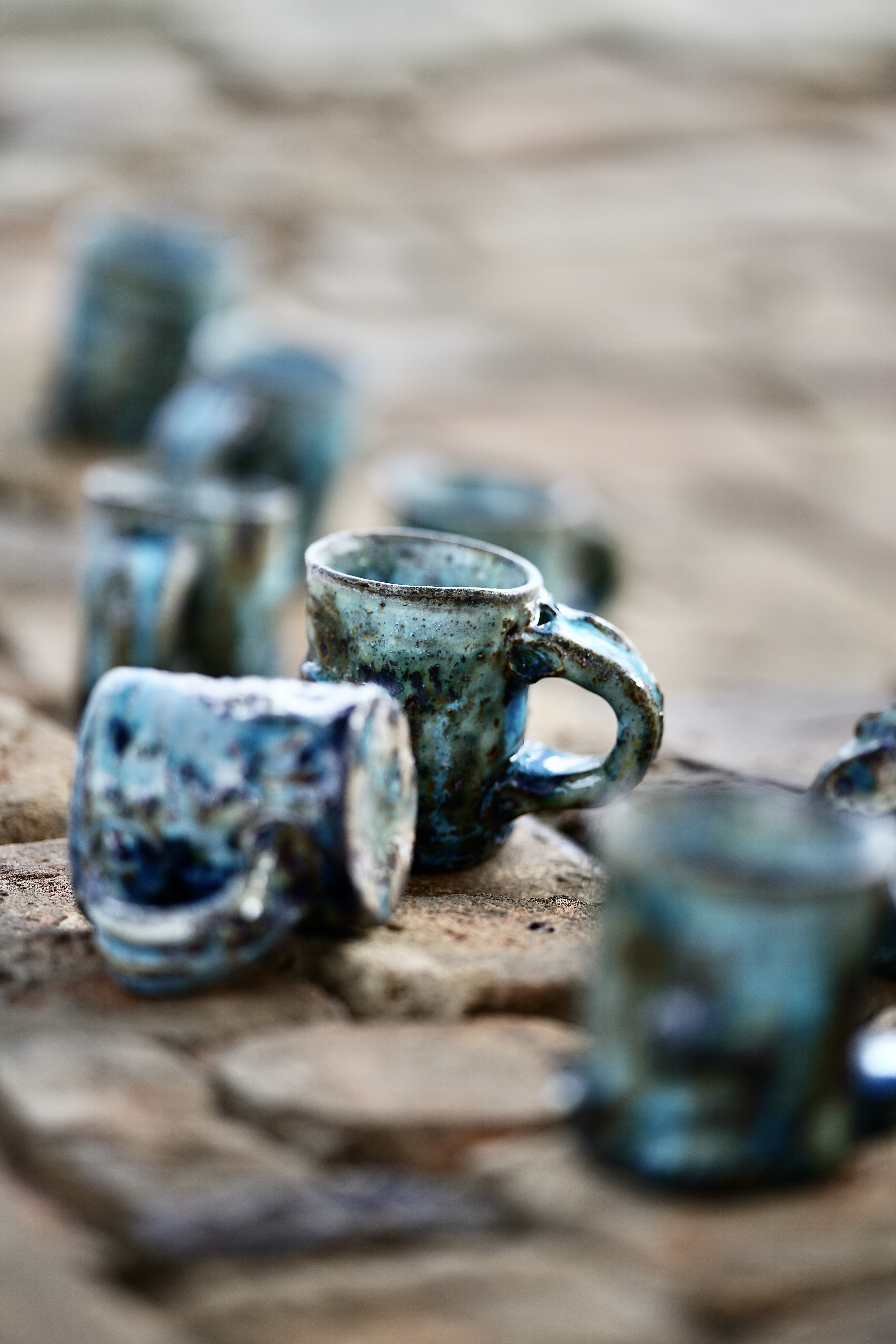
Lava rolls and cools. The Koto Cauldron is now a cup in my hand. Shinichi Kotsuji of Syunbougama studio in Iga city, Mie prefecture, Japan, invites the humble igneous rhyolite pebble to become fire again. Shinichi’s cup and bowl are liberated from the commonplace and become the answer to my questions about the unreasonableness of life. Textured rough imperfections of the Iga clay are fused into the light of Shinichi’s blue blaze fractured by the kiseto yellow, green, and brown glaze of ash and iron procured from two shiny spaceship-sized electric kilns and the devotion to his craft. Shinichi’s playful touch releases the stress in the living animal of earth trapped by the atmosphere that cooled the magma before it was willing to surrender its original energy and force.
I’m stunned into speechless poetry as I lift the cup to my lips, nattering along an unsmooth, dinted, and disheveled lip so much like my own. I want to weep again, as I did the first time I encountered this man’s ceramic craft near my Studio Kura residency. Instead, I rejoice and drink from a vessel so wholly in rebellion to the rules of ceramic ware production and practice; I am released from the pressure of perfection into a primal sensory memory now cupped in my hand. My nervous system relaxes into the fire. I did not know this was possible.
Particles of blue light are dancing on my hand, and I feel the syllables of Braille bones and stones and hubris from Lake Biwa, the Earth’s thirteenth oldest lake, formed four million years ago. The Koto rhyolite pebble where I rest my index finger front facing on my cup opposite the thick and almost too small handle is now weightless in my hand. I dissolve into my breath, and I become the cloud floating over the late Cretaceous rocks of the large-scale caldera of pyroclastic eruptions in Japan. The rhyolite pebble scraping my skin is the company I now keep with a volcano on my kitchen counter.
Shinichi’s noren curtain hangs at the studio door. He marks “bowl” over the fabric surface with a broad brush and ink to announce his place and purpose to the world. But I see how it divides his inner artistic life of curious play from the outer world, where we suffer as a species to know what we are. He is waiting for Mr. Imamura, who for thirty years has been his clay craftsman. The trestle of cotton relaxes on the wind. Shinichi is not disappointed. A truck has turned from the main road and labors up the hill. Shinichi is no longer the schoolboy of imaginary dragons who burst into joy the first time he touched clay. Shinichi is the dragon.


